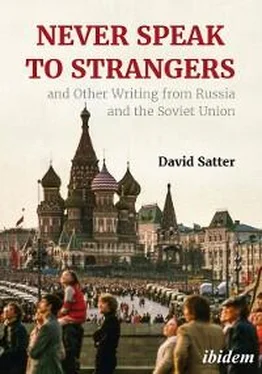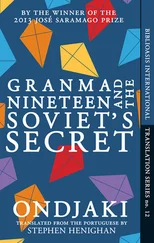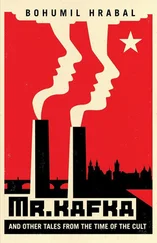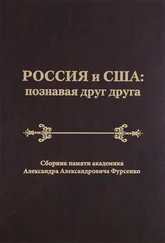1 ...8 9 10 12 13 14 ...37 The creation of a modern industrial base, which has made Lithuania a major producer of machine tools, automation equipment, electronic computers, radio and TV sets, refrigerators, and fishing trawlers, has been accompanied by urbanisation.
Only 22.9 per cent of the population of Lithuania lived in cities in 1939, but by 1975 the urban population had risen to 57 per cent, including about 450,000 persons in Vilnius. The post-war collectivisation of agriculture, which provoked armed resistance from Lithuanian peasants, was 96 per cent accomplished by mid-1952. Today the emphasis is on inducing peasants to leave their surviving individual homesteads for prefabricated “agro-towns” and creating automated complexes for highly specialised agricultural production, freeing workers to go into industry which is short of manpower, and changing the character of the republic still further.
Against this background, Lithuanian nationalism, which is thought to be among the most fervent of local nationalisms in the Soviet Union, only rarely takes the form of open mass resistance. Although there was a riot in Kaunas in 1972 following the self-immolation of a young Roman Catholic, it was by far the worst nationalist disturbance in the Soviet Union during the last 20 years. Resistance now manifests itself in frequent acts of individual protest, rare in other parts of the Soviet Union; the circulation of Lithuanian language underground journals; and the existence of various ill-defined nationalist groups which have a marked appeal, particularly for the young.
The atmosphere in Vilnius is one of surface calm brought about at least partially by economic development. The fate of the formerly independent country is aptly reflected in the appearance of the town, which is circled by rows of modern apartment blocks built with materials and processes standard throughout the Soviet Union, but has at its heart the old city with darkened passageways and inner courtyards in the shadow of old, ornate Catholic churches.
Lithuania enjoys a material standard of living which is higher than that of the Soviet Union as a whole. It trails only Estonia and Latvia among Soviet republics in terms of produced income per capita.
Nationalist incidents are seldom mentioned in the Press, but the following are reliably reported to have taken place in recent months in the city of Vilnius: a Lithuanian Soviet Republic flag was torn down from the dormitory of Vilnius state university; students removed a portrait of Lenin from the central post office; signs saying “Free Lithuania—Russians get out,” appeared on public buildings; and the old Lithuanian national flag was raised for a brief moment above the Ministry of Internal Affairs which has charge of the police.
Such incidents are not likely to interfere with the Lithuanian Republic’s economic growth which will be aided during the 1976–80 five-year plan period by the construction of an atomic power station and the opening of the first stage of the massive Mazeikiai oil refinery which is to go into service in 1978. But overt acts of protest are not typical in the Soviet Union and stand, as visible manifestations of a nationalist feeling that material progress has not been able to eliminate.
There are believed to be many small groups of people scattered throughout the Republic who meet for religious or national purposes but have no legal means of communicating with each other. On December 21 four men in Kaunas and Ionova were arrested. Typewriters and hundreds of nationalist leaflets were confiscated. The men were connected with a group called the Union of Organisations of Independent Peoples, but despite signs that they had made extensive organisational preparations, their group was completely unknown to nationalists in Vilnius.
The most tangible manifestations of enduring Lithuanian nationalism are the underground Lithuanian language journals which appear regularly and discuss religious issues as well as aspects of Lithuanian history during the period when the country was independent. There are four such journals today, the oldest and most famous being the Chronicle of the Lithuanian Catholic Church which, despite attempts to repress it, has been appearing in typescript since the spring of 1972. Two arrests were made in Vilnius recently in connection with the chronicle. No underground journals appear in Latvia or Estonia, the two other Baltic republics absorbed by the Soviet Union.
Lithuania has recovered demographically as well as economically, from the destruction of the Second World War and the mass deportations of 1940–41 and 1946–50. In 1975, however, the population of 3.3m was only slightly higher than the population had been in 1939. About 80 per cent, of the population are Lithuanians (although Lithuanians comprise only 43 per cent, of the population of Vilnius), and the national balance is relatively stable. Lithuanians have dominated the leadership of the Lithuanian Communist Party since the Khrushchev era and the party leadership is believed to be committed to developing national culture in a socialist context.
The difficulty in Lithuania, as in other Soviet national republics, is that not all aspects of Lithuanian national culture fit easily into the socialist framework. The collectivisation and transformation of agriculture is helping to complete the process of placing the republic on an urbanised basis more amenable to Soviet rule. But the teachings of the Church, in what is traditionally a devout outpost of Catholicism in north-eastern Europe, are opposed to Marxism. It is this ideological conflict which gives nationalism in Lithuania its unusual tenacity.
There are now believed to be 1½ m believers in Lithuania. Their share in the population is far higher than in the Soviet Union as a whole. Many people in Lithuania attend Church festivals and many often mark special occasions such as births, or funerals with religious rites as a passive means of expressing nationalist sentiments.
A nationalist Catholic priest in Vilnius, however, said he saw little hope for the future of Catholicism in Lithuania. There is a shortage of bibles and religious texts, he said, and a Soviet law forbids anyone but a parent from giving religious instruction to a child, which effectively precludes not only religious schools—but even, according to the strict letter of the law, religious instruction by close relatives. At the same time, children are subject to a steady stream of atheist propaganda.
Financial Times, Thursday, June 16, 1977
The Belgrade conference
The Price of Respectability
With the convening of the Belgrade Conference at which fulfilment of the 1975 Helsinki Agreement is to be reviewed, the Soviet leaders are aware of the steep price in terms of respect for human rights they are being asked for Soviet entry as a respected member of the world community.
The Soviet Union’s recent attempts to expand ties with the West have all met the insistence that they consent to some measure of internal liberalization.
Even against this background, the Belgrade Conference represents a new stage in East-West relations because, although the Helsinki Agreement reflected Soviet acceptance of the humanitarian provisions of the Final Act in return for Western agreement to security arrangements and the European territorial status quo, the discussions at Belgrade promise to move beyond what human rights commitments the USSR is ready to make publicly to the even more sensitive question of how fulfilment of these commitments is to be judged.
The need to proceed from the general to the particular will mean that the conference will concern itself with the fate of the nine imprisoned members of the unofficial Helsinki Agreement Monitoring Group and of Mr. Anatoly Shcharansky, the group’s liaison with the Western Press, who faces charges of treason punishable by execution.
Читать дальше












